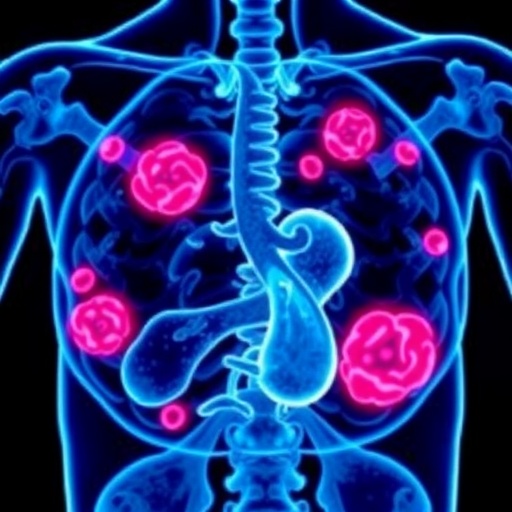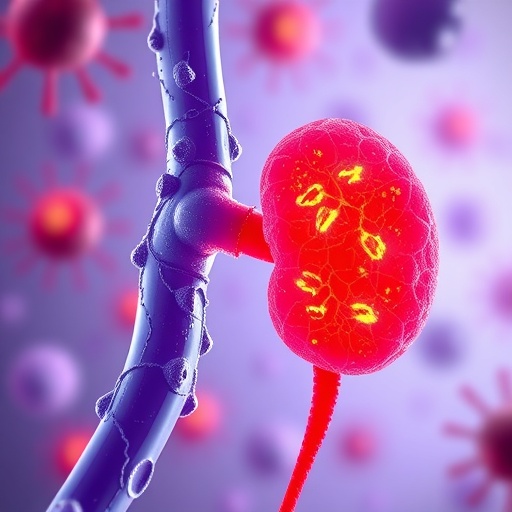
In a groundbreaking advance that could redefine treatment paradigms for pediatric acute myeloid leukemia (AML), scientists from St. Jude Children’s Research Hospital and the Dana-Farber Cancer Institute have unveiled a novel therapeutic strategy that exploits specific molecular vulnerabilities in aggressive forms of AML driven by NUP98 fusion proteins. This innovative approach, detailed in the latest issue of Cancer Discovery, converges on the disruption of critical protein complexes underpinning oncogenic gene expression, marking a significant leap forward for a disease that remains notoriously refractory to current therapies.
AML, a heterogeneous malignancy of the bone marrow, poses a dire clinical challenge, particularly in pediatric cases harboring chromosomal rearrangements involving the NUP98 gene. These rearrangements produce fusion proteins that hijack normal cellular machinery to activate cancer-driving genes, fostering disease progression and resistance to conventional chemotherapy. Until now, targeting such fusion-driven leukemias has been impeded by the dual obstacles of toxicity—owing to the essential functions of native proteins—and incomplete responses to existing agents like menin inhibitors.
The research team, spearheaded by senior co-corresponding author Dr. Charles Mullighan of St. Jude’s Department of Pathology, embarked on a systematic interrogation of the proteomic landscape associated with NUP98 fusion proteins in AML cell models. Employing cutting-edge genome editing technologies, they mapped protein interactions and conducted functional knockouts to delineate which molecular components the leukemia cells critically depend upon for survival. Their meticulous efforts pinpointed two histone acetyltransferases—MOZ/KAT6A and HBO1/KAT7—as integral constituents of a complex facilitating oncogene activation.
.adsslot_pgGPft9eDC{width:728px !important;height:90px !important;}
@media(max-width:1199px){ .adsslot_pgGPft9eDC{width:468px !important;height:60px !important;}
}
@media(max-width:767px){ .adsslot_pgGPft9eDC{width:320px !important;height:50px !important;}
}
ADVERTISEMENT
Histone acetyltransferases play pivotal roles in chromatin remodeling by adding acetyl groups to histones, thereby modulating gene accessibility and transcriptional activity. In leukemia driven by NUP98 fusions, the MOZ/KAT6A and HBO1/KAT7 complexes appear co-opted to maintain the aberrant expression of genes that sustain malignant transformation. By targeting these acetyltransferases, researchers hypothesized that it would be possible to dismantle the pathological gene expression networks essential for leukemia cell viability without the deleterious effects linked to direct inhibition of native proteins.
To validate this hypothesis, the investigators utilized pharmacologic inhibitors designed to disrupt the activity of the MOZ/KAT6A and HBO1/KAT7 complexes. Treatment with these inhibitors alone significantly improved survival outcomes in patient-derived AML mouse models. Yet, the most striking therapeutic benefit emerged when these agents were combined with menin inhibitors, which block menin, a protein that partners with NUP98 fusions to regulate leukemic gene expression. The combinatorial treatment demonstrated synergistic efficacy, markedly prolonging survival in preclinical models, including those simulating relapsed disease—a stage where therapeutic options are critically limited.
This dual-targeted approach exemplifies a precision medicine strategy that circumvents the limitations of single-agent therapy by simultaneously disarming multiple nodes of the oncogenic network. Dr. Mullighan emphasized the potential clinical implications, stating, “Our findings reveal a previously unrecognized molecular dependency in NUP98-rearranged AML and provide a robust rationale for clinical trials that evaluate the combination of menin inhibition with acetyltransferase complex disruption, particularly in patients who do not respond to menin inhibitors alone.”
The identification of MOZ/KAT6A and HBO1/KAT7 as druggable targets was accomplished through a comprehensive proteogenomic workflow, combining chromatin immunoprecipitation, mass spectrometry, and CRISPR-Cas9–mediated knockout screens. This integrated methodology enabled the researchers to not only map the physical interactome of NUP98 fusion proteins but also to functionally validate the essentiality of candidate proteins in maintaining leukemia cell survival.
Beyond providing mechanistic insights, the study showcased the therapeutic promise of acetyltransferase inhibition by utilizing small molecule compounds that selectively bind and inhibit MOZ/KAT6A and HBO1/KAT7 activity. These agents effectively disrupted the assembly of the oncogenic transcriptional complex, leading to downregulation of critical leukemogenic genes and impairment of leukemia cell proliferation and survival in vitro and in vivo.
Importantly, the combined therapy exhibited tolerability in animal models, indicating a potentially favorable therapeutic window. Given the aggressive nature of NUP98 fusion-driven AML and the limited efficacy of current treatments, these findings offer hope for overcoming one of the most pernicious obstacles in pediatric oncology.
The study was a collaborative effort involving a multidisciplinary team of scientists from premier institutions including St. Jude Children’s Research Hospital, Dana-Farber Cancer Institute, University of Cambridge, Washington University in St. Louis, and Memorial Sloan Kettering Cancer Center. Supported by extensive funding from the National Cancer Institute and various philanthropic organizations, this work underscores the power of collaborative translational research in moving promising laboratory discoveries toward clinical application.
As the landscape of leukemia treatment continues to evolve, this novel combination strategy targeting histone acetyltransferase complexes alongside menin inhibition could pave the way for new therapeutic regimens. Ongoing and future clinical trials will be essential to assess the safety, dosing, and efficacy of this approach in children afflicted by NUP98-rearranged AML, potentially transforming outcomes for a challenging patient population.
With over 80% of childhood cancer patients now surviving, thanks in part to relentless research and innovation at institutions like St. Jude, advances such as this herald a new era where even the most intractable leukemias can be confronted with targeted, rational therapies. This breakthrough not only illuminates the molecular underpinnings of AML pathogenesis but exemplifies how precision targeting of epigenetic regulators can arrest cancer progression and improve patient prognosis.
Subject of Research: Pediatric acute myeloid leukemia (AML) driven by NUP98 fusion proteins and therapeutic targeting of histone acetyltransferase complexes.
Article Title: KAT6A and KAT7 Histone Acetyltransferase Complexes Are Molecular Dependencies and Therapeutic Targets in NUP98-Rearranged Acute Myeloid Leukemia
News Publication Date: 19-Jun-2025
Web References:
https://aacrjournals.org/cancerdiscovery/article/doi/10.1158/2159-8290.CD-24-1772/762972/KAT6A-and-KAT7-Histone-Acetyltransferase-Complexes
References:
DOI: 10.1158/2159-8290.CD-24-1772
Image Credits: St. Jude Children’s Research Hospital
Keywords: Pediatric AML, NUP98 fusion proteins, histone acetyltransferase, MOZ/KAT6A, HBO1/KAT7, menin inhibition, cancer genomics, epigenetic therapy, pediatric oncology, leukemia, gene expression, protein complexes
Tags: cancer research advancementschildhood leukemia treatmentDana-Farber Cancer Institutegenome editing technologies in medicinemolecular vulnerabilities in leukemiaNUP98 fusion proteinsoncogenic gene expressionpediatric acute myeloid leukemiaprotein complex disruptionSt. Jude Children’s Research Hospitaltherapeutic strategy for AML






